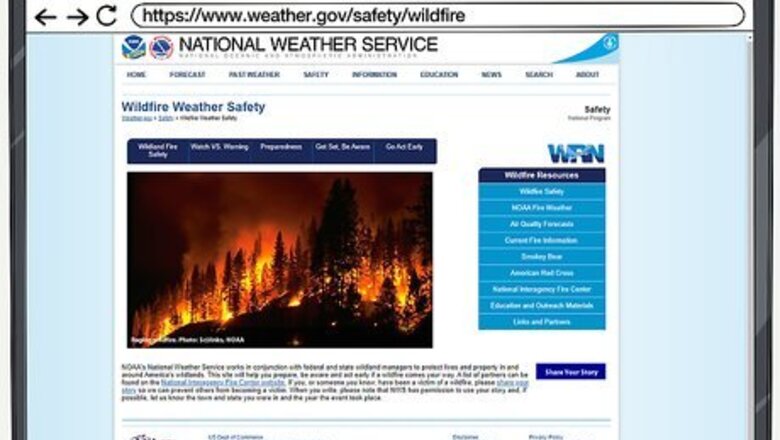
views
Monitoring New Fires
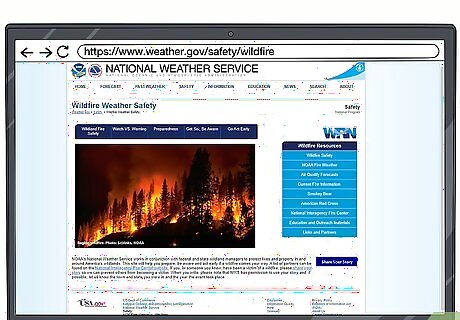
Check your country's weather service website for fire warnings. Many countries have government weather services that monitor national weather conditions and identify areas where fires may break out. These national services can then alert local fire departments with warnings to prepare for a fire. In Australia, use the Bureau of Meteorology website. Find the fire weather knowledge centre at http://www.bom.gov.au/weather-services/fire-weather-centre/ and current weather warnings at http://www.bom.gov.au/australia/warnings/index.shtml. In the United States, use the National Weather Service website. Find fire watches and warnings at https://www.weather.gov/safety/wildfire. In the United Kingdom, use the Met Office. To see weather warnings, go to https://www.metoffice.gov.uk/weather/warnings-and-advice.
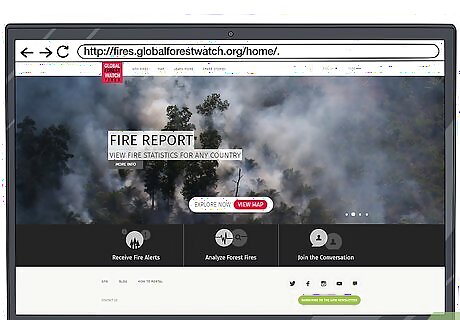
Use government and news organization websites to monitor current fires. You can find information, maps, and statistics about fires anywhere in the world using the Global Forest Watch Fire website: http://fires.globalforestwatch.org/home/. You can even sign up for alerts in your area. In Australia, find information about fire incidents and warnings at https://myfirewatch.landgate.wa.gov.au/alerts.html and bushfire news alerts at https://www.9news.com.au/bushfires. In the United States, NASA, the US Forest Service, and numerous state websites contain information on new wildfires. The Incident Information System provides an interactive map and details about all fires currently burning in the US. Find the map at https://inciweb.nwcg.gov/.
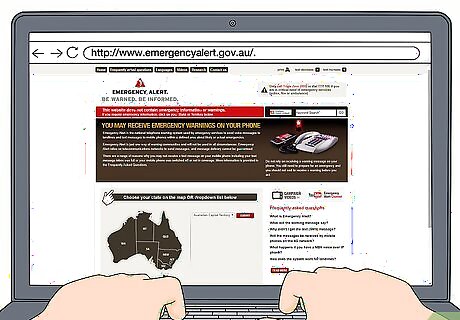
Sign up for your community’s wildfire alert system. If your area is prone to wildfires, it may have an early alert system. Check the website for your local government and see if there is a warning system in place. Sign up to receive alerts if a wildfire breaks out. In Australia, you can find emergency alerts for your area at http://www.emergencyalert.gov.au/. Learn more about the United State's emergency alert system here: https://www.ready.gov/alerts. There may be an option to receive emails or texts. Choose the option that is most likely to reach you right away.

Download disaster alert apps to stay informed in real time. There are many apps that send alerts when there are wildfires and other natural disasters in your area. Download a few and see which you like best. The Wildfire app is currently considered the best for wildfire warnings. Most standard weather apps like AccuWeather and the National Weather Service include emergency disaster alerts for your area. If you have one of these, you may already have all the warning you need for wildfires. In the US, the FEMA app provides warnings and also information on local shelters and emergency services. If your local news stations have apps, use these as well. They might provide the most up-to-date information on fires.
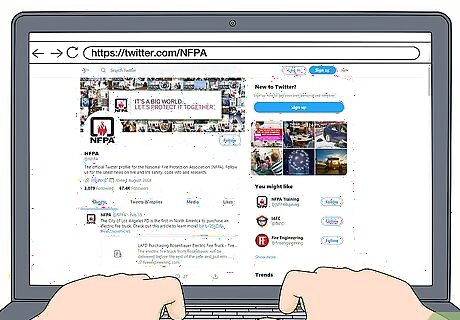
Track social media updates from news stations or fire departments. Follow local media outlets and fire departments on Twitter and Facebook. They may post updates on the fire's progress and location. In the absence of other information, social media can give you some much-needed news. Some useful Twitter accounts to follow are @smokey_bear, the National Weather Service (@NWS), and the National Fire Protection Agency (@NFPA). These outlets all monitor wildfire activity. Try searching for hashtags like #wildfire for news from people closer to the fire. Remember that this isn't official information, though, so be careful about what you believe. There is a lot of misinformation in chaotic situations. If you're checking social media, conserve your phone or computer battery power. There may be a blackout, so keep these charged up.
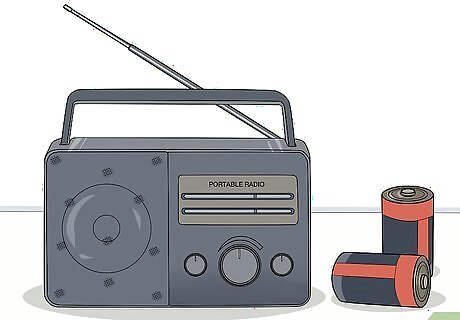
Use a battery-powered radio to get news alerts. If there is a power outage, a battery-powered radio will still work. Tune in to your local news station or the National Weather service for continuous updates on fires in the area. Leave the radio on so you’re constantly up to date on the situation. Keep at least 1 more set of fresh batteries on hand for the radio. If you have to evacuate, bring the radio with you to stay informed.
Watching for Warning Signs
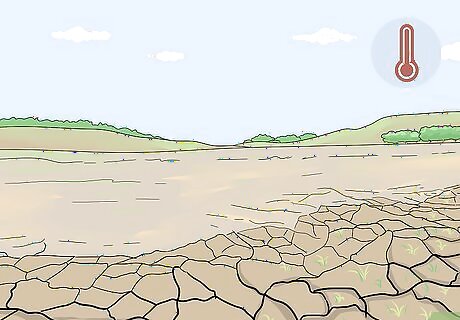
Be prepared for a fire if the weather is hot and dry. Prolonged dry weather is a major precondition for wildfires. If your area is experiencing a drought or especially hot weather, then fires are more likely. Be prepared to take the necessary steps if a fire does break out. Dry weather is a particular problem in wooded areas. If you live near a forest, pay extra attention to local fire alerts.
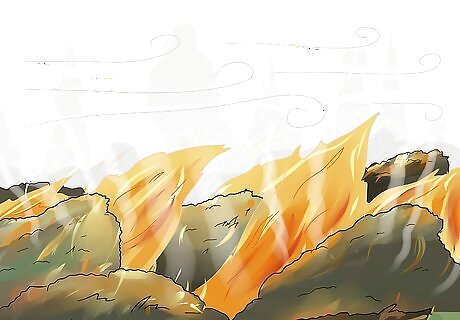
Watch for strong winds blowing the fire towards you. Strong winds add oxygen to wildfires and also blow embers around that can start more fires. If you know that there is a fire in the area and there are strong winds, be prepared to evacuate. The fire could start heading towards you. For example, if you know there’s a fire north of you and the wind is blowing south, it’s blowing the fire in your direction. This puts you in the fire’s path. Check the local wind speed and direction through the National Weather Service by visiting https://www.weather.gov/gyx/WindSpeedAndDirection.
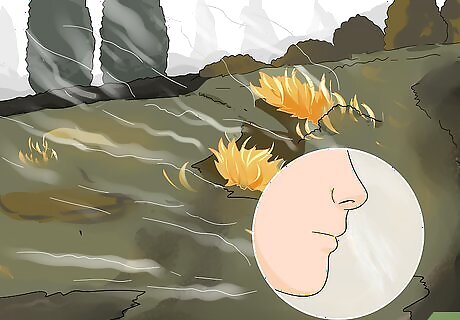
Check for a smoky smell in the area. If a fire is approaching you, you may smell it before you can see it. Go outside and check if you smell anything burning. This could indicate that a fire is getting closer. Remember that there are other reasons to smell smoke, like someone lighting a barbecue. If you smell smoke, check your alerts to see if there is a wildfire in the area.
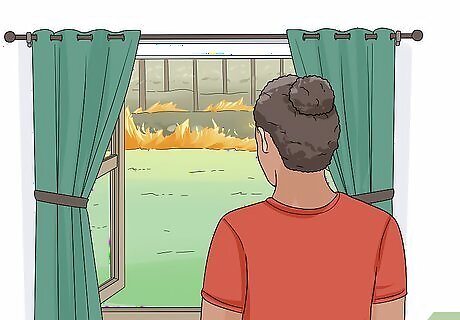
Look for smoke approaching your home. If you know there is a fire in the area and have no other way to track it, look outside for smoke. If you can see smoke in the distance, this indicates that the fire is approaching your home. Continue monitoring the smoke to assess what you should do next. At this point, even if you aren’t ordered to evacuate yet, you should leave your home. Wildfires travel very fast. Keep your family safe by evacuating if one gets near your home.
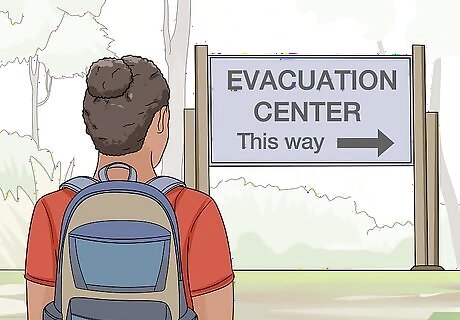
Evacuate if you’re ordered to. While local authorities will do all they can to contain the fire, they may not be able to stop it before it reaches people’s homes. If you’re in the path of a wildfire and are ordered to evacuate, don’t delay. Gather your family and a few critical belongings and head to the recommended evacuation zone. Study the evacuation routes ahead of time if you can. This way you can avoid danger areas. Have a few days of food and water in your home if there are fire warnings. Bring this with you if you have to leave.




















Comments
0 comment